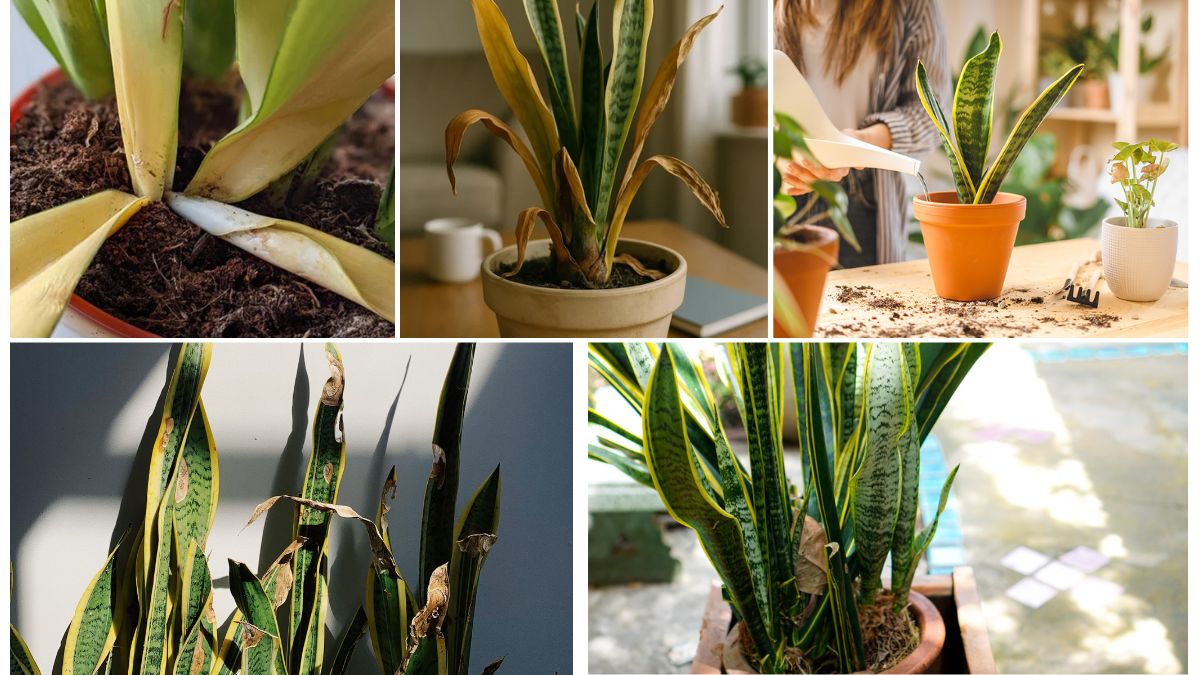Snake plants (Sansevieria), also known as mother-in-law’s tongue, are beloved houseplants praised for their resilience, architectural beauty, and air-purifying qualities. However, one common issue that even experienced gardeners encounter is yellowing leaves. When your snake plant’s foliage begins to turn yellow, it’s often a sign that something is off in its environment or care routine. In this article, we’ll explore the various causes behind yellow leaves in snake plants and provide detailed solutions to help you restore your plant’s vibrant green health.
1. Overwatering: The Most Common Culprit
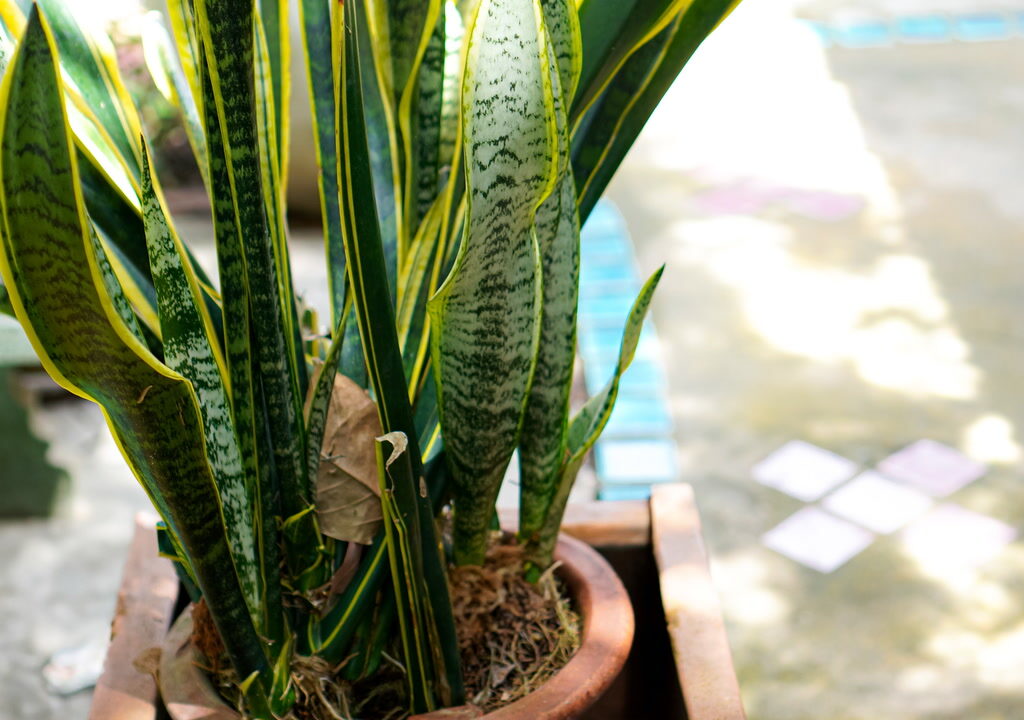
Cause:
Snake plants are drought-tolerant succulents, and overwatering is the leading cause of yellow leaves. When the roots sit in waterlogged soil, they begin to rot, cutting off the plant’s ability to absorb nutrients.
Solution:
- Water your snake plant only when the top 2–3 inches of soil are completely dry.
- Use a pot with drainage holes and well-draining soil.
- Reduce watering frequency during colder months when the plant’s growth slows.
2. Poor Drainage and Wrong Potting Soil
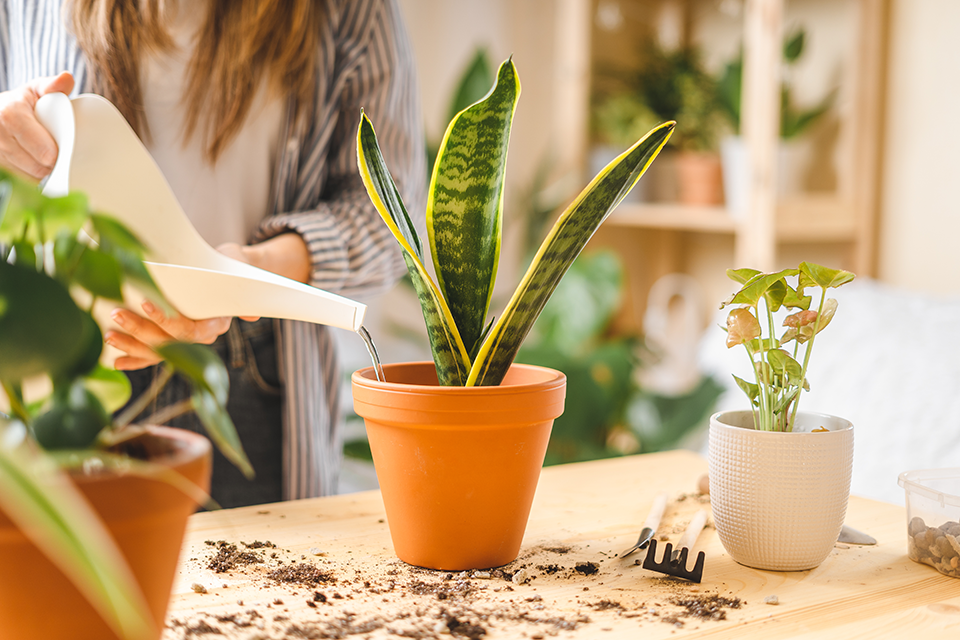
Cause:
Even if you’re not watering too often, poor drainage or heavy soil can trap moisture and create the same root-rotting effect.
Solution:
- Repot your snake plant using a DIY soil mix: 2 parts cactus mix or potting soil, 1 part perlite or pumice, and 1 part coarse sand.
- Ensure the pot has proper drainage holes.
- Consider using a terracotta pot which allows better moisture evaporation.
3. Underwatering and Dehydration
Cause:
While snake plants are tolerant of drought, extended dry periods can also cause stress, resulting in yellow and droopy leaves.
Solution:
- Water thoroughly once the soil is dry, allowing excess to drain.
- Establish a watering routine suited to your climate—roughly every 2–3 weeks during the growing season.
4. Inconsistent Light Exposure

Cause:
Snake plants thrive in bright, indirect sunlight but can tolerate low light. However, too much direct sunlight can scorch the leaves, while total shade can lead to weak, pale, and yellowing foliage.
Solution:
- Place your plant near a north- or east-facing window.
- Avoid prolonged exposure to harsh midday sun.
- Rotate the plant occasionally to ensure even light distribution.
5. Temperature Stress
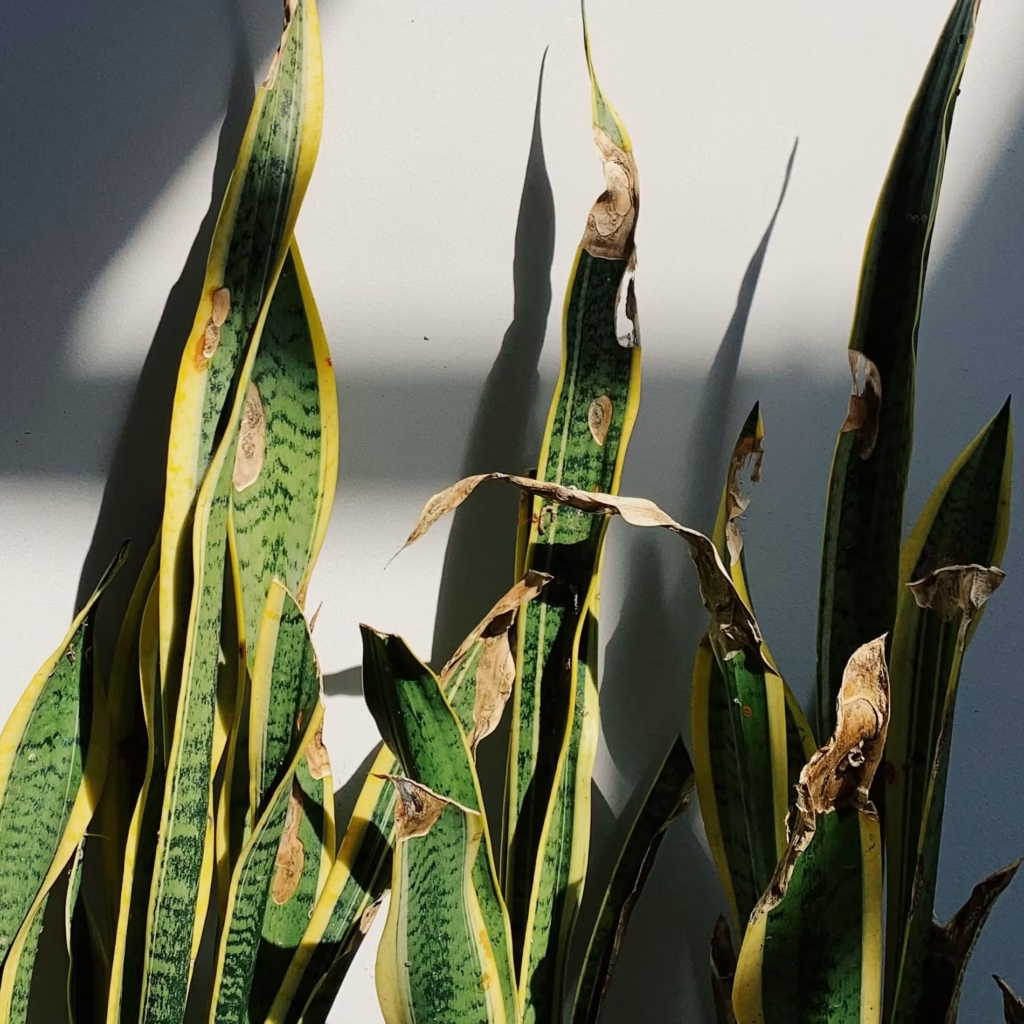
Cause:
Snake plants are tropical plants that prefer warm temperatures between 18°C to 27°C. Exposure to cold drafts, frosty windows, or sudden temperature changes can cause yellowing.
Solution:
- Keep your plant away from air conditioners, heaters, and open windows during winter.
- Maintain a stable room temperature and avoid placing it in temperatures below 10°C.
6. Nutrient Deficiencies
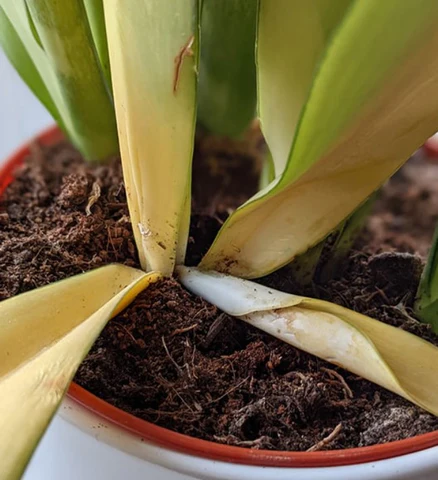
Cause:
If the soil lacks essential nutrients, especially nitrogen, it may lead to pale or yellow leaves. Nutrient-starved snake plants can struggle to photosynthesize properly.
Solution:
- Feed your plant with a balanced, water-soluble houseplant fertilizer (preferably 10-10-10 or 20-20-20) once a month during the growing season (spring and summer).
- Avoid over-fertilizing, as this can also damage the roots.
7. Pest Infestations
Cause:
Spider mites, mealybugs, and scale insects may feed on your plant, causing discoloration, yellowing, and weakened growth.
Solution:
- Inspect the leaves regularly for webs, cottony clusters, or sticky residue.
- Wipe down leaves with a damp cloth and mild insecticidal soap.
- Isolate affected plants to prevent the spread of pests.
8. Natural Aging
Cause:
Sometimes, yellowing is simply a sign of old age. Lower leaves naturally die off as the plant grows.
Solution:
- Trim off the yellowing leaves using clean, sterilized scissors.
- Focus on maintaining healthy new growth.
- Regularly remove dead or dying leaves to promote airflow and appearance.
9. Chemical Exposure
Cause:
Snake plants can react poorly to chemical-laden water (especially with high fluoride or chlorine) or pesticide buildup.
Solution:
- Use distilled, filtered, or rainwater for watering.
- Flush the soil with clean water every few months to remove mineral buildup.
- Use organic or low-toxicity treatments when dealing with pests.
10. Rootbound Growth
Cause:
Snake plants can survive in tight pots, but being severely rootbound may limit nutrient uptake and stress the plant, leading to yellow leaves.
Solution:
- Check if roots are circling the bottom of the pot or growing out of the drainage holes.
- Repot every 2–3 years into a pot 1–2 inches larger in diameter.
- Trim excess roots and refresh the soil during repotting.
How to Revive a Snake Plant with Yellow Leaves
Step-by-Step Revival Guide:
- Inspect the plant: Check for root rot, pests, and soil condition.
- Trim affected leaves: Use sterilized shears to remove damaged yellow parts.
- Repot if needed: Especially if overwatering or root rot is suspected.
- Adjust lighting: Ensure the plant is receiving indirect, bright light.
- Change watering routine: Adopt a ‘less is more’ approach.
- Apply fertilizer cautiously: Use only during active growing periods.
- Monitor recovery: It may take a few weeks for visible improvement.
Preventative Measures for Long-Term Health
- Create a regular care schedule tailored to the season.
- Keep a log of watering dates and fertilization to avoid excess.
- Quarantine new plants to prevent introducing pests or diseases.
- Rotate the pot for uniform exposure and growth.
- Keep the plant clean by wiping down dust from leaves monthly.
Conclusion
Yellow leaves on a snake plant don’t mean disaster—but they are your plant’s way of communicating that something isn’t quite right. By diagnosing the issue and making small adjustments to your watering habits, lighting, soil mix, or pest control practices, you can restore your plant to full health. With its resilience and low maintenance needs, a thriving snake plant will reward you with clean air and green beauty for years to come.
